

Catalogue Raisonné. Bank Station Dragons, CR544
Search the Catalogue
Bank Station Dragons
CR 544
Kinkell, Scotland
November - January, 1994
Nickel-plated silver and champlevé enamel on patinated bronze
68 x 22 x 5 inches
Bank London Underground Station
Citations and Comments
These three pairs of panels flank the direction signs at the exits to Bank Underground Station, London.
, ,Part reptile, part fabulous beast, with terrifying agility and startling elegance, the Dragon is the archetype of fear. Breathing fire, dripping poison, wart-covered and scaly, it is both alien and horrid.
However, the earliest depictions of these mythic creatures are based on objective descriptions of crocodiles brought back by early travellers. But it is difficult not to imagine that they are also the product of some dim subconscious memory of dinosaurs, ones that had by chance survived into the historical period of the earliest humanoids…
The choice of dragons as the heraldic beasts of the City of London is based on a misunderstanding. In the 12th century the Earl of Essex had as the crest on his helmet a fan, made of thin fabric stretched tightly over radial spines. This was mistaken for a dragon’s wing, and appropriated as the City crest.
Since then dragons have flourished in the City of London, not only as the supporters on the coat of arms (with a very definite dragon’s wing as the crest), but also as City Boundary markers on the Embankment, in Holborn, and elsewhere. Along the way they have acquired the cross of St George on their wings, in contrast to the roundels, so reminiscent of the RAF, on the wings of Uccello’s dragon in the National Gallery in London. Thus there is already a wide range of interpretations of the dragon in the City of London. The Bank Station Dragons are intended to augment this group and not to imitate any particular example in it, although the Boundary Dragons have been a useful point of reference.
The depiction of dragons in the present day is a risky business. The possible pitfalls are to give them the apparently lifelike appearance of a museum dinosaur, or the kitsch appearance of a Disney Corporation monster. Neither of these approaches will produce an object which could be considered to be a work of art. In order to achieve this elusive quality it is essential to give the image strong formal or abstract elements which derive from principles developed in the art of the twentieth century.
In my dragons the abstract elements which lift the sculpture out of the rut of the obvious are the rigid diagonal of the staff and its conjunction with the perfect circle of the tail, and the contrast between the naturalistic handling of the body of the dragons and the flat formal treatment of the wings and banners. These last mentioned areas will contain violent colour contrasts - red and white on the banners and red and silver on the wings. They will be visually very prominent and their strict geometry - the conjunction between banner and wing and the uncompromising manner of their execution - bring strong abstract elements to the sculpture while remaining obviously identifiable as wings and banners.
Catalogue Raisonné Information
We are compiling a full record of all Gerald Laing's artworks for the publication of a full Catalogue Raisonné.
If you own or have owned this work we would be most grateful for your help in ensuring that all details in the catalogue are correct - please .(JavaScript must be enabled to view this email address) or fill in this form.
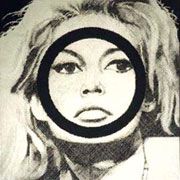
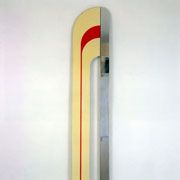
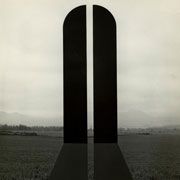

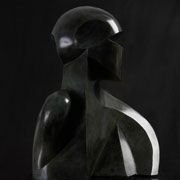
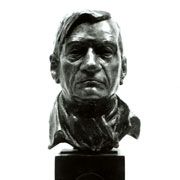






__50h.jpg)
